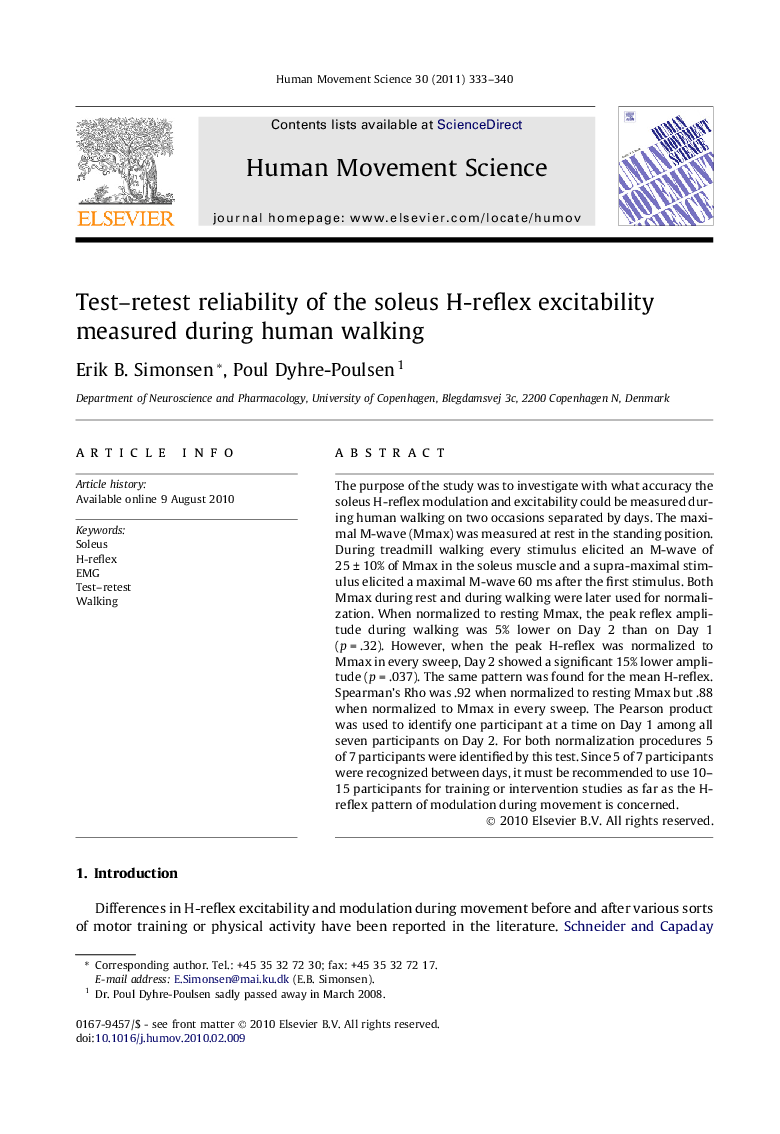| Article ID | Journal | Published Year | Pages | File Type |
|---|---|---|---|---|
| 928658 | Human Movement Science | 2011 | 8 Pages |
The purpose of the study was to investigate with what accuracy the soleus H-reflex modulation and excitability could be measured during human walking on two occasions separated by days. The maximal M-wave (Mmax) was measured at rest in the standing position. During treadmill walking every stimulus elicited an M-wave of 25 ± 10% of Mmax in the soleus muscle and a supra-maximal stimulus elicited a maximal M-wave 60 ms after the first stimulus. Both Mmax during rest and during walking were later used for normalization. When normalized to resting Mmax, the peak reflex amplitude during walking was 5% lower on Day 2 than on Day 1 (p = .32). However, when the peak H-reflex was normalized to Mmax in every sweep, Day 2 showed a significant 15% lower amplitude (p = .037). The same pattern was found for the mean H-reflex. Spearman’s Rho was .92 when normalized to resting Mmax but .88 when normalized to Mmax in every sweep. The Pearson product was used to identify one participant at a time on Day 1 among all seven participants on Day 2. For both normalization procedures 5 of 7 participants were identified by this test. Since 5 of 7 participants were recognized between days, it must be recommended to use 10–15 participants for training or intervention studies as far as the H-reflex pattern of modulation during movement is concerned.
